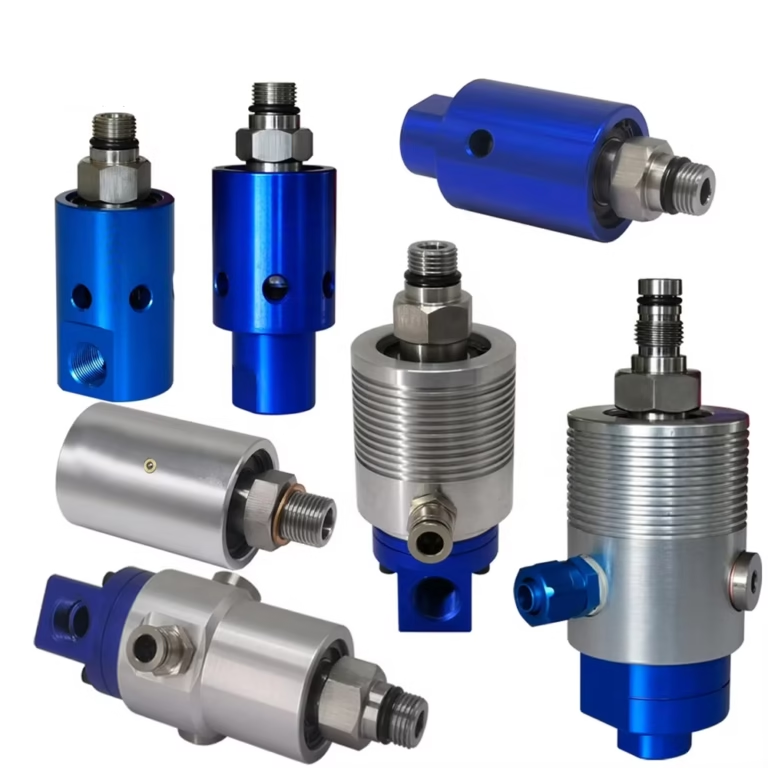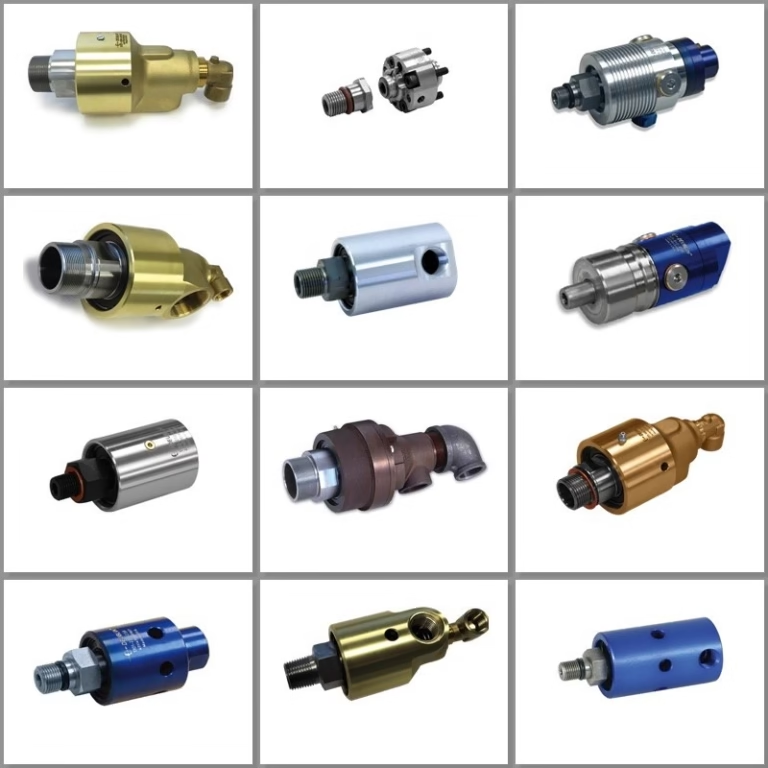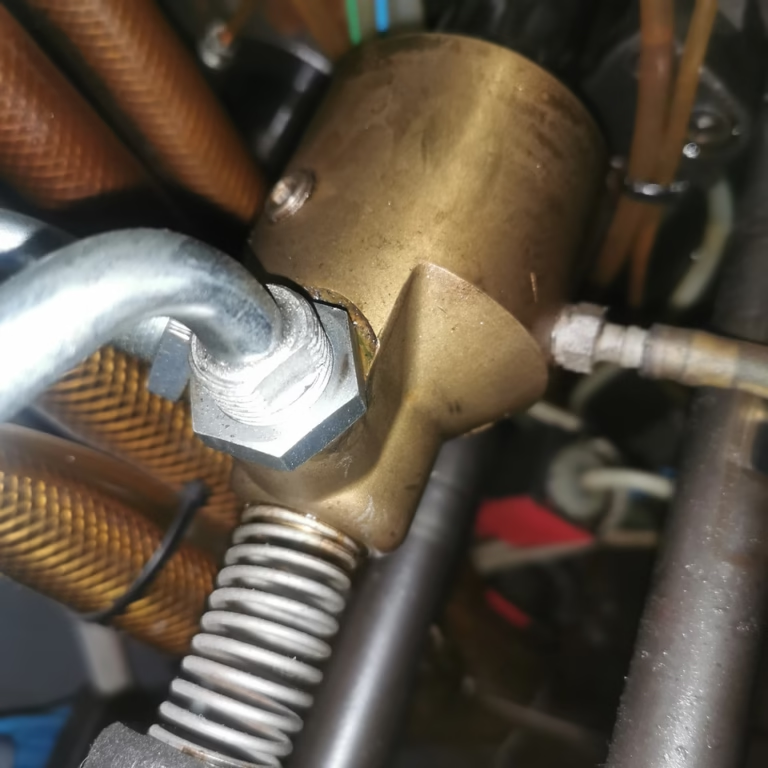2-Way Rotary Unions parts
Unraveling the Mysteries of 2-Way Rotary Unions: A Comprehensive Guide
In the intricate realm of industrial machinery and fluid transfer systems, rotary unions play a crucial role in enabling the seamless transmission of fluids, gases, and even electrical power between stationary and rotating components. Among the diverse array of rotary unions available, the 2-way rotary union stands out as a fundamental and widely utilized component. Whether you work in manufacturing, food processing, oil and gas, or any other industry involving rotating machinery and fluid transfer, understanding 2 – way rotary unions is essential. In this in-depth blog post, we will explore 2-way rotary unions comprehensively, covering their definition, working principles, construction, applications, benefits, and more.
What is a 2-Way Rotary Union?
A 2-way rotary union, also known as a two-channel or dual-line rotary union, is a specialized mechanical device that facilitates the transfer of two different fluids, gases, or a combination of both from a stationary source to a rotating component. Unlike single-way rotary unions, which can only handle one fluid medium at a time, 2 – way rotary unions offer the flexibility to manage two separate fluid paths simultaneously.
At its core, a 2 – way rotary union consists of a stationary housing and a rotating shaft. Manufacturers connect the stationary housing to fluid sources or supply lines while attaching the rotating shaft to the machine’s rotating part. Inside the union, two distinct channels or passages keep the two fluids separate, preventing cross-contamination. These channels feature seals and bearings to ensure a leak-proof connection and smooth rotation.
Fluids or gases passing through a two-way rotary union serve various purposes. For example, one channel might supply a cooling fluid to a rotating component, while the other transfers a lubricant to lubricate moving parts. In some cases, one channel carries a process fluid for manufacturing, and the other handles pneumatic control or compressed air transmission.
Basic Construction of a 2-Way Rotary Union
Stationary Housing
Manufacturers typically construct the stationary housing of a 2-way rotary union from durable materials like stainless steel, carbon steel, or alloy steel. The material choice depends on application requirements, including fluid properties, operating pressure, temperature, and environmental conditions. Stainless steel is popular due to its excellent corrosion resistance, making it suitable for aggressive fluids or harsh environments.
The stationary housing features inlet ports that connect to fluid supply lines. Designers engineer these ports for secure, leak-free connections, which may include threaded, flanged, or quick-disconnect couplings. The housing also provides a stable support structure for the union’s internal components.
Rotating Shaft
The rotating shaft is a critical component, responsible for transmitting fluids from the stationary housing to the machine’s rotating part. Engineers make it from high-strength materials to withstand rotational stresses like torque and centrifugal forces.
The shaft has two internal channels along its length, corresponding to the union’s two fluid paths. Precision machining ensures smooth fluid flow and prevents obstructions. Manufacturers often polish the shaft’s outer surface to reduce friction and wear and may coat it with a protective layer for enhanced durability.
Seals
Seals are vital components in 2 – way rotary unions, preventing leakage and ensuring fluid path separation. Common types include lip seals, O-rings, and mechanical seals.
Lip seals, made from flexible rubber or elastomeric materials, use a lip-shaped edge to press against the rotating shaft and create a seal. O – O-rings, simple yet effective, fit into grooves to form tight seals between mating surfaces. Mechanical seals, more complex, consist of two mating surfaces (one stationary, one rotating) with a lubricating fluid to reduce friction and prevent leaks.
Engineers select seals based on fluid type, pressure, temperature, and rotational speed. High-temperature applications may use materials like fluorocarbon rubber (Viton).
Bearings
Bearings in 2-way rotary unions support the rotating shaft and reduce friction for smooth, efficient rotation. They are designed to withstand radial and axial loads during operation. Common types include ball bearings and roller bearings.
Ball bearings, popular for their low friction and high-speed capabilities, use small balls rolling between two races to minimize contact area and friction. Roller bearings, capable of supporting heavier loads, are ideal for high radial or axial load applications. The choice depends on load requirements, speed, and operating temperature.
Working Principles of a 2-Way Rotary Union
2 – way rotary unions operate on the principle of maintaining a continuous, leak-proof connection between stationary and rotating parts while allowing two fluids to flow simultaneously. When the machine runs, the union’s rotating shaft spins with the machine’s rotating component.
Fluids enter the stationary housing through inlet ports, each filling its respective channel. As the shaft rotates, it carries the fluids along its internal channels and delivers them to the rotating part via outlet ports. Seals prevent leakage and fluid mixing, while bearings enable smooth rotation with minimal friction. The internal channel design and sealing mechanism work together to maintain fluid pressure and flow rate, ensuring delivery to the intended destination in the rotating system.
Advantages of 2-Way Rotary Unions
Increased Efficiency
One primary advantage of 2 – way rotary unions is enhanced efficiency. By transferring two fluids simultaneously, they eliminate the need for multiple single-way unions or complex piping systems. This simplifies machine design, reduces installation space, and minimizes risks of fluid leaks and pressure drops.
For example, in a printing press, a 2 – way rotary union supplies ink and water to rotating cylinders, enabling precise control for higher print quality and productivity.
Cost – Savings
Using 2-way rotary unions leads to long-term cost savings. Fewer components and a simpler piping system mean lower purchase, installation, and maintenance costs. Reduced leak and failure risks also cut downtime for repairs, increasing production time and lowering operational costs.
In a food processing plant, a single-way union transferring cleaning solution and lubricant to rotating equipment replaces two single-way unions, saving on equipment, installation, and maintenance expenses over time.
Versatility
2-way rotary unions are highly versatile, handling liquids, gases, and semi-solids under various pressure and temperature conditions. This makes them suitable for industries like manufacturing, food and beverage, paper and pulp, oil and gas, and automotive.
In oil and gas, they transfer drilling mud and compressed air to rotating drill strings. In automotive, they supply coolant and hydraulic fluid to engine and transmission components.
Improved Performance
Precisely controlling two fluid flows simultaneously boosts overall system performance. Delivering the right fluids to the right machine parts at the right time optimizes equipment operation, reduces component wear, and extends machinery lifespan.
In a metalworking machine, a 2 – way union cools cutting tools with coolant and lubricates moving parts, maintaining optimal tool temperature, reducing friction, and improving product quality.
Applications of 2-Way Rotary Unions
Manufacturing Industry
Manufacturers use 2 – way rotary unions in various applications. In injection molding machines, they transfer hydraulic fluid for mold-closing and cooling water for mold temperature control, ensuring consistent product quality and shorter cycle times.
In metal stamping presses, these unions supply lubricant to moving parts and coolant to dies, improving press performance, reducing die wear, and extending equipment life.
Food and Beverage Industry
Meeting strict hygiene standards, 2 – the way rotary unions transfer products (beverages, sauces, oils) and cleaning solutions in filling machines. After each cycle, cleaning solutions prevent nozzle contamination, ensuring food safety and quality.
In mixers and homogenizers, they supply lubricant to rotating shafts and coolant to control product temperature during processing, maintaining food integrity.
Paper and Pulp Industry
In paper machines, 2 – way rotary unions transfer steam for drying and water for cooling/cleaning, enabling precise fluid control for efficient operation. In pulp processing, they handle chemicals for bleaching/refining and water for dilution/washing.
Oil and Gas Industry
Designed for harsh environments, 2 – way rotary unions transfer drilling mud and compressed air to drill strings, cooling bits, removing cuttings, and controlling pressure. In production facilities, they connect stationary and rotating equipment like pumps and turbines for fluid transfer.
Automotive Industry
In engines, they supply coolant for block cooling and lubricant for moving parts like crankshafts, ensuring proper operation and extended lifespan. In transmissions, they transfer hydraulic fluid for shifting and lubricant for gears/bearings, improving performance and reducing wear.
Choosing the Right 2-Way Rotary Union
Consider the Fluid Type
The first step is matching the union to the fluid(s) it will transfer. Different fluids have unique chemical, viscosity, and pressure/temperature needs. Select materials like stainless steel for acidic fluids or larger diameters for viscous fluids to prevent corrosion, seal degradation, and leaks.
Evaluate Operating Conditions
Each union has specific temperature, pressure, and speed ranges. Choose one that matches your application’s conditions: high-temperature seals for hot fluids, robust designs for high pressure, and high-speed bearings for rapid rotation.
Determine the Connection Type
Inlet/outlet ports must connect seamlessly to supply lines and equipment. Threaded connections are simple but unsuitable for high pressure; flanged connections offer security for high pressure; quick – disconnects suit frequent maintenance needs.
Consider Size and Configuration
Balance flow rate requirements with installation space. Larger unions handle higher flow but take up more space. Ensure port orientation allows easy connection to your system.
Choose a Reputable Manufacturer
Opt for manufacturers with proven quality and reliability. They should offer technical support, maintenance advice, and replacement parts. Customer reviews and testimonials can guide your choice.
Maintenance and Troubleshooting
Regular Maintenance
Regular checks ensure longevity: inspect for leaks, wear on seals/bearings, and lubricate moving parts as needed. Address leaks promptly to prevent fluid loss and equipment damage. Replace worn seals/bearings to maintain performance.
Troubleshooting
Leakage: Check for worn seals, damaged surfaces, or improper installation. Replace seals and repair surfaces as needed.
Abnormal Noise: Inspect bearings for wear or shaft misalignment. Replace bearings and adjust alignment.
Reduced Performance: Clear internal channel blockages, replace worn seals, and verify operating conditions are within specifications.
FAQs About 2-Way Rotary Unions
Q1: What industries commonly use 2-way rotary unions?
A: 2-way rotary unions are widely used in industries requiring fluid/gas transfer during rotation, including construction equipment (excavators, cranes), renewable energy (wind turbines, solar trackers), packaging machinery (rotary fillers), and aerospace (radar systems, aircraft test rigs). Their ability to handle high speeds and multi-media compatibility makes them indispensable in these sectors.
Q2: How do I choose the right seal material for my 2-way rotary union?
A: Selecting the seal material depends on your operating conditions:
Mechanical seals (e.g., carbon vs. ceramic) suit high-pressure hydraulic applications.
PTFE seals are ideal for corrosive chemicals or food-grade environments.
Magnetic seals minimize friction in sterile or vacuum applications.
Always cross-check compatibility with your media’s temperature, viscosity, and chemical properties.
Q3: Can a 2-way rotary union operate at extreme temperatures?
A: Yes, but material selection is critical. Standard models handle -40°C to +200°C, while high-temperature variants (e.g., ceramic-coated seals, metal bellows) can withstand up to +500°C. For cryogenic applications, specialized seals (e.g., PTFE filled with glass) maintain flexibility at sub-zero temperatures.
Q4: What maintenance steps extend the lifespan of a 2-way rotary union?
A: Key practices include:
Daily inspections for leaks or unusual noise.
Weekly torque checks on mounting bolts (over-tightening damages seals).
Annual seal replacement and bearing lubrication (if non-self-lubricating).
Pre-flushing with a compatible fluid to remove debris before installation.
Proactive maintenance can double the union’s service life compared to reactive-only approaches.
Conclusion
2 – way rotary unions are essential in industrial applications, delivering efficiency, cost savings, versatility, and performance improvements. Understanding their design, operation, and selection criteria helps industries optimize processes and ensure machinery reliability.
By choosing the right union for your needs and performing regular maintenance, you can extend equipment life, reduce downtime, and boost productivity. As technology advances, expect further innovations in 2 – way rotary union design, making them even more reliable for future industrial needs. Whether in manufacturing, food, and beverage, or energy, these unions will continue to play a vital role in rotating machinery and fluid transfer systems.







